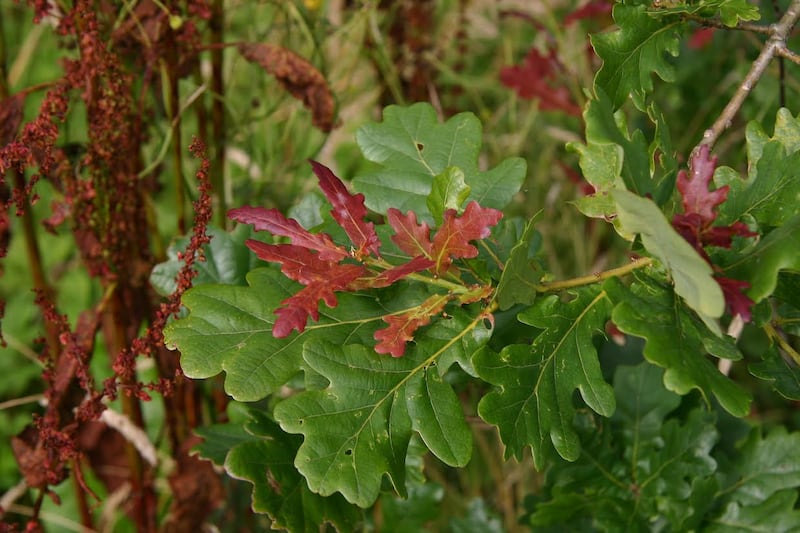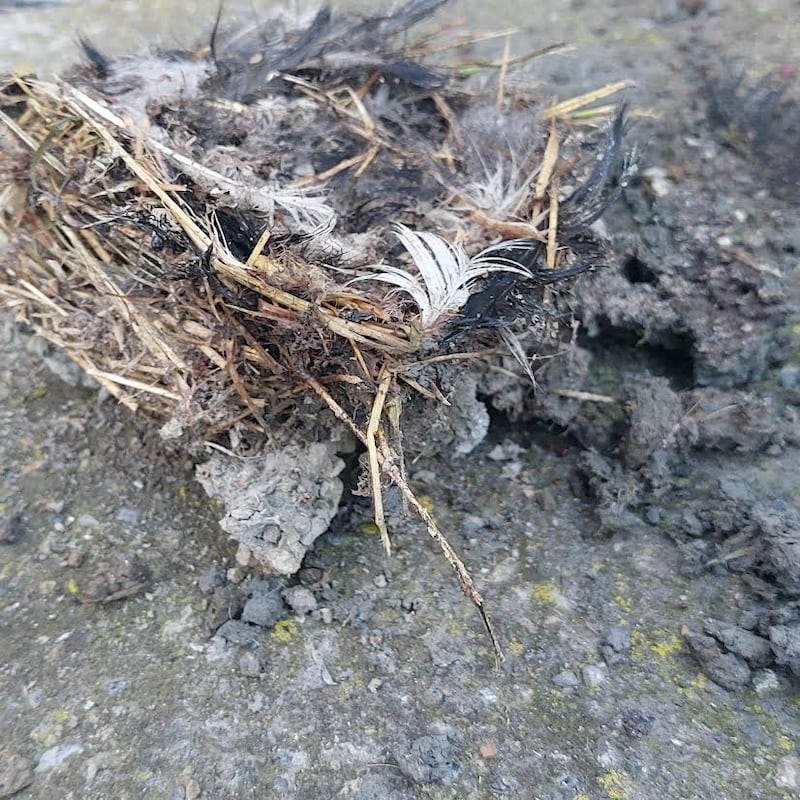We are ground-feeding seeds to our beloved songbirds and, again this year, we’ve had a couple of jays show up from time to time. In July I first noticed one jay calling round for seeds whose feathers below the “belt line” look awfully unruly. I thought it might be a youngster who has yet to shed some of the juvenile plumage, but the messy feathers are still there after all this time. I’m wondering, would it be an anomaly akin to feather duster disease? Heike O’Sullivan, Kerry
This jay is not a young bird, so its feather condition is probably not related to its age. It does look unusually bedraggled. That could be a result of normal moulting, which jays and other birds undergo at this time of year, although, as you say, that should be over by now. Or it could be the result of some sort of skin infection, perhaps due either to mites or to a fungus. It otherwise looks healthy and in good condition, so hopefully all will be well.

While looking for cinnabar caterpillars on a ragwort plant near Ballyferriter, I saw this hairy bee/insect. What is it? Catherine Coakley
This dishevelled creature is a bumblebee – a very wet looking Bombus pascuorum, the common carder bee. It probably didn’t make it back to the nest the previous night, or was caught in rain. There are not enough important details visible to say whether it is a worker (probably) or a male.
READ MORE

What’s gone wrong with my oak tree? It’s now August and the tree is beginning to sprout new leaves. And they’re red! Is this climate change? Terry O’Toole, Dublin
This is lammas growth on the oak, so called because it occurs around Lammas Day, the first of August. Originally a Celtic feast celebrating the sun god Lugh, it is now more commonly known as Lúnasa. Because of the large numbers of insects and other invertebrates that feed upon oak, many of the leaves can be tattered and have numerous holes in them by late July. Oaks then produce a new flush of leaves, especially on young trees. These new leaves have an abundance of red protective pigments to deter the herbivores; hence the red colour.

I only noticed this guy struggling on the path near the Orwell roundabout in Templeogue because of the blue “thorn”. What type is it? Malcolm McGreer
It is a lime hawkmoth larva. These caterpillars feed on the leaves of lime trees, then drop down to pupate in the ground near the tree. The first Irish record was in 2010 in Drumcondra and they are really well established now – though still just in the Dublin area. See mothsireland.com, which welcomes all moth records.

This is a house martin nest, which fell down in July. Later that day six or seven martins (I assume the parents and young from the first brood), calling loudly, were coming back to the nest site. Where will they roost now? Will they build again for a second brood? Would a cold summer weaken their nests so that they don’t dry and harden? George Prizeman
Yes, it probably was the two adult birds and their offspring returning to the site and calling loudly. They reuse nests from year to year with ongoing repairs, so they now realise that they have to build a new nest from scratch for their second brood. No wonder they were complaining about the shoddy workmanship. They sleep either while perched (in trees or on electricity wires) or possibly in flight, like swifts. They most likely did build another nest and rear a second brood.
Please submit your nature query, observation, or photo, with a location, via irishtimes.com/eyeonnature or by email to weekend@irishtimes.com

















